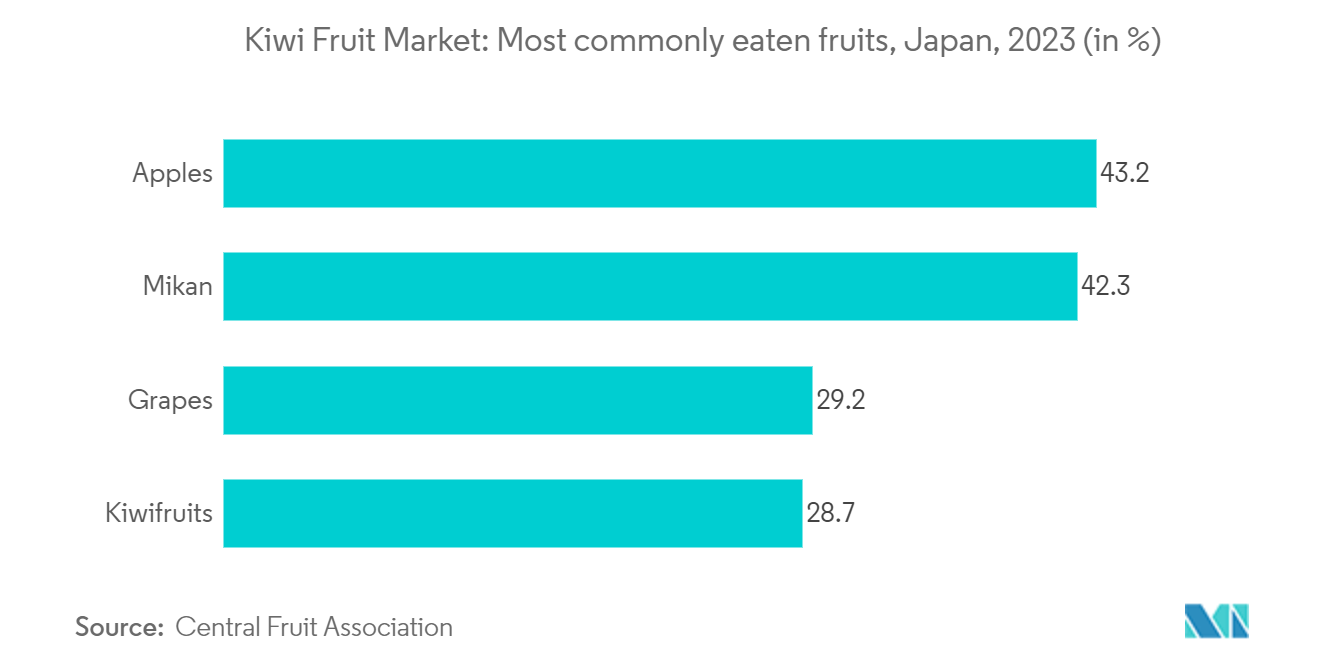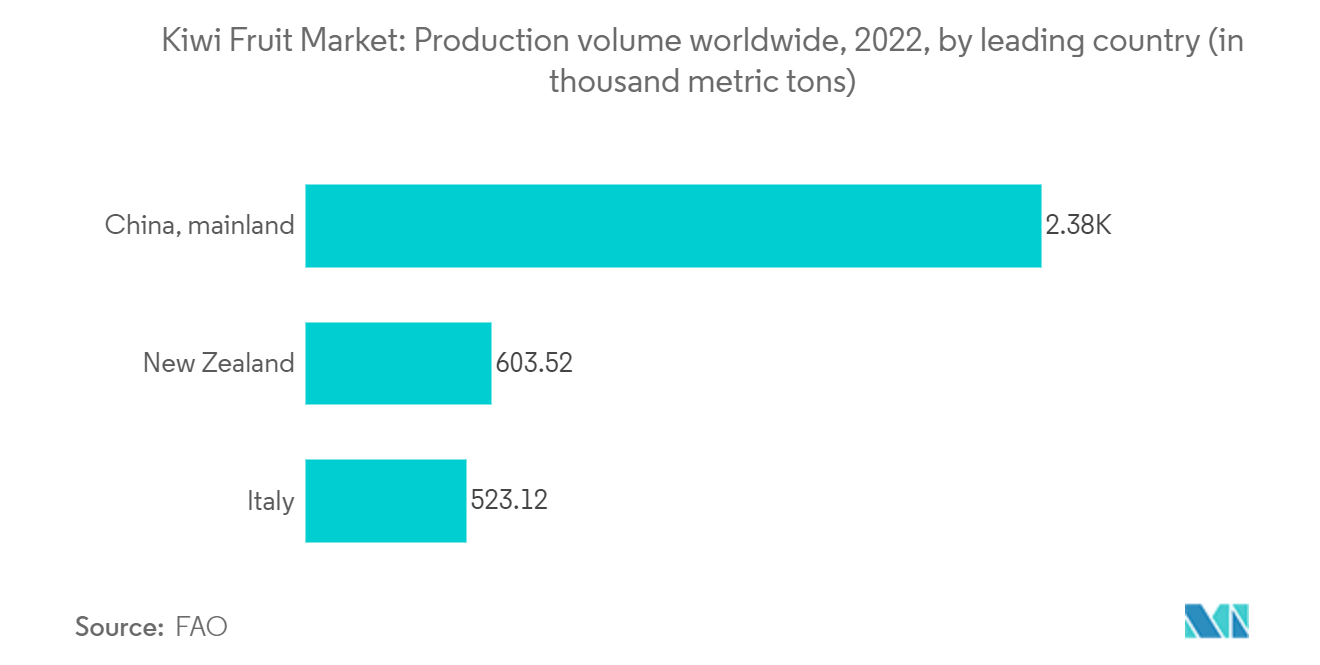Market Trends of Kiwi Fruit Industry
Increasing Health Consciousness Among Consumers
The popularity of Kiwi is increasing among consumers globally, driven by a growing emphasis on health and well-being. The US Food and Drug Administration approved the nutrient content of Kiwi fruit as low-fat, saturated fat-free, sodium-free, cholesterol-free, high in fiber, and a good source of potassium. Consumers of higher incomes are even willing to pay premium prices to prioritize their health, leading to an uptick in consumption. Beyond general health, Kiwis are touted for preventing chronic conditions like cancer and heart disease. Packed with antioxidants, Kiwi boosts antioxidant levels and helps stave off metabolic disorders such as obesity and hypertension. As health concerns like diabetes and obesity become more prevalent due to hectic lifestyles, Kiwi consumption is witnessing a surge globally because of its low glycemic index (GI).

China Dominates the Market in Terms of Production
China leads the global kiwifruit production, both in volume and variety. In 2022, it produced 2,380,304.5 metric tons, representing over half of the world's output. Notably, Shaanxi and Sichuan Provinces stand out as major production hubs. Leveraging modern techniques, such as greenhouse farming, China extends its growing season and enhances yield and quality. With consumers increasingly favoring fresh, natural products, the kiwifruit, often dubbed a superfood, is witnessing a surge in production. The nation's pivot towards sustainable farming, embracing practices like organic fertilizers and integrated pest management, further bolsters production. This commitment, alongside expanding cultivation areas and enhanced agricultural practices, has led to a steady rise in production. For instance, the harvested area grew from 197,118 hectares in 2021 to 199,078 hectares in 2022, as reported by FAOSTAT. Undoubtedly, China's kiwifruit industry is a cornerstone of its thriving agricultural landscape, driven by its conducive growing conditions.


